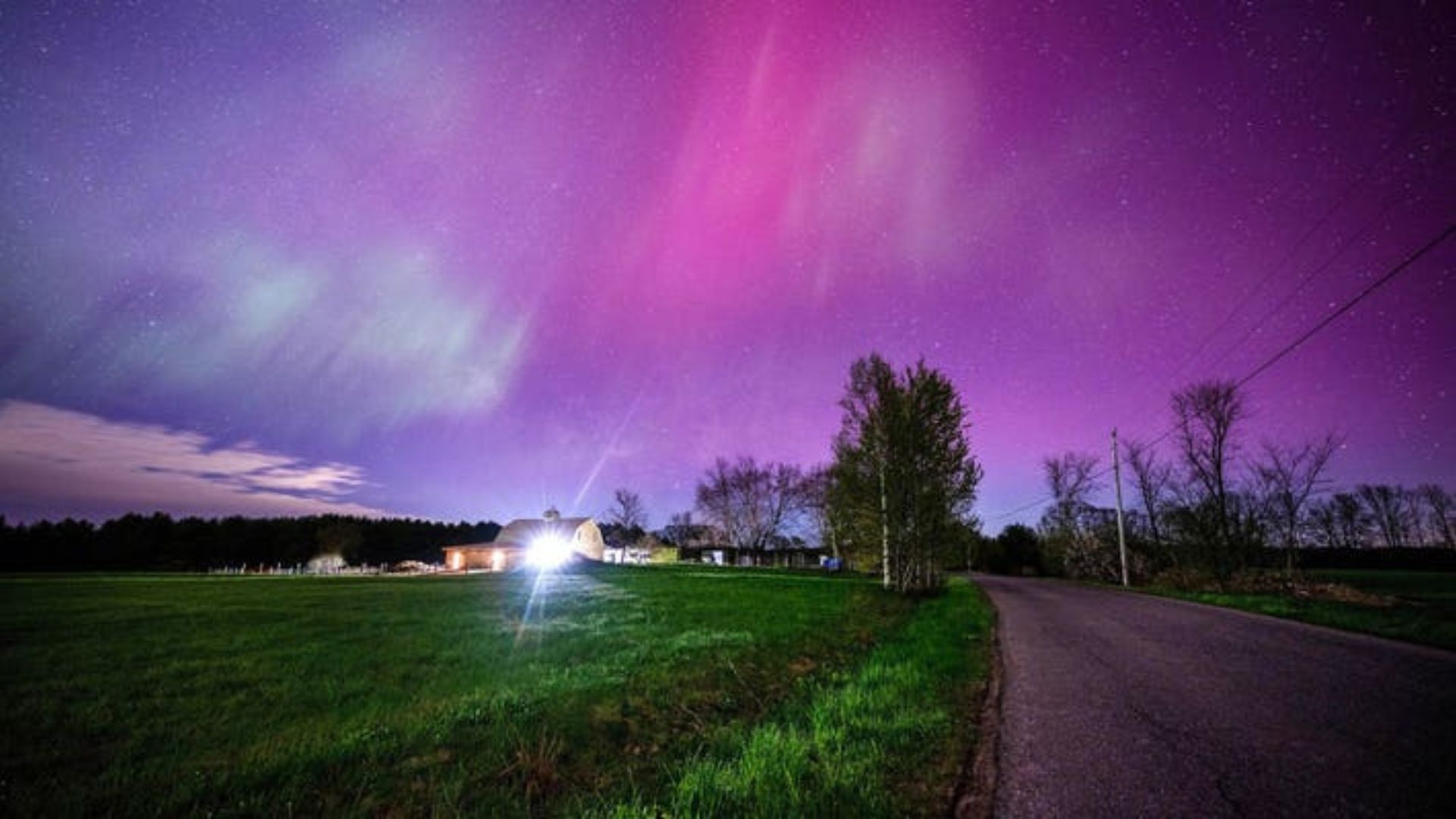Understanding the Northern Lights: What is the Aurora Borealis?
The Northern Lights, also known as the Aurora Borealis, are a breathtaking natural phenomenon that has fascinated humanity for centuries. These dazzling displays of light can be seen in the polar regions and are caused by the interaction between solar winds and the Earth’s magnetic field. When these energetic particles collide with gases in our atmosphere, they create stunning displays of colorful light that dance across the night sky.
Despite their beauty, the Northern Lights are more than just a visual spectacle; they are a testament to the dynamic nature of our planet’s atmosphere. As we delve deeper into understanding this phenomenon, we uncover the complex interplay of cosmic forces that give rise to such awe-inspiring displays. The striking colors, ranging from greens and pinks to purples and reds, vary depending on the type of gas involved and the altitude at which the collision occurs.
Experiencing the Northern Lights is often described as a life-changing experience. Many people travel from across the globe to witness this celestial ballet firsthand. As we explore more about the Aurora Borealis, understanding how to predict and view these lights becomes essential, enhancing the chance to witness one of nature’s most extraordinary shows.
The Science Behind the Northern Lights
At the heart of the Northern Lights lies the Sun, our life-giving star, which emits charged particles known as the solar wind. These particles travel through space and, upon reaching Earth, are captured by our planet’s magnetic field. The Earth’s magnetic field funnels these particles towards the polar regions, where they collide with gases such as oxygen and nitrogen.
The specific colors of the Aurora Borealis arise from the type of gas and altitude of the collision. For instance, green is the most common color, caused by oxygen molecules located about 60 miles above the Earth. Meanwhile, red auroras are rarer and occur at higher altitudes, typically above 150 miles, due to the same oxygen molecules but at different energy states. Nitrogen collisions can create purples and blues, adding to the spectrum of light.
Understanding this scientific process not only enhances our appreciation of the Northern Lights but also helps us predict when and where these displays will occur. Advances in technology and science have allowed us to develop forecasts that anticipate auroral activity, making it easier for enthusiasts and travelers to plan their viewing experiences effectively.
How to Read the Aurora Borealis Forecast
One of the keys to successfully witnessing the Northern Lights is understanding how to interpret aurora forecasts. These forecasts are available online and provide valuable information about the likelihood of auroral activity. They are typically based on measurements of solar wind conditions, geomagnetic activity, and historical data.
When reading an aurora forecast, look for the KP index, which ranges from 0 to 9. This index represents the level of geomagnetic activity, with higher numbers indicating stronger auroral activity. A KP index of 3 or higher is generally considered favorable for viewing the Northern Lights, though local conditions such as light pollution and weather must also be considered.
In addition to the KP index, consider other factors such as solar wind speed and density, which can also influence auroral displays. Websites and apps dedicated to aurora forecasts often provide real-time updates and alerts, allowing users to stay informed about conditions that might affect their chances of witnessing the Northern Lights.
Best Times and Locations to View the Northern Lights
Timing and location play crucial roles in optimizing your chances of seeing the Aurora Borealis. The best time to observe the Northern Lights is during the winter months, from late September to early April, when the nights are longest and the skies are darkest. During this period, the polar regions experience extended darkness, creating ideal conditions for auroral observations.
Popular locations for viewing the Northern Lights include countries within the Arctic Circle, such as Norway, Sweden, Finland, Iceland, and parts of Canada and Alaska. These regions offer numerous vantage points away from city lights, providing clear views of the night sky. Each location has its unique appeal, from the remote wilderness of Lapland to the volcanic landscapes of Iceland.
To maximize your viewing experience, consider staying in accommodations designed for aurora watching, such as glass igloos or lodges with panoramic windows. These offer the comfort of indoor viewing while still being immersed in nature. Additionally, plan your trip around new moon phases to minimize light interference and increase the visibility of the auroras.
Tips for Photographing the Northern Lights
Capturing the Northern Lights on camera requires a bit of preparation and the right equipment. A DSLR or mirrorless camera with manual settings is ideal, as it allows you to control exposure, aperture, and ISO settings. A sturdy tripod is essential for keeping your camera steady during long exposures, which are necessary to capture the faint light of the auroras.
When setting up your camera, start with a wide-angle lens to capture as much of the sky as possible. Set your camera to manual mode, with an aperture of f/2.8 or wider to let in maximum light. Use a low ISO setting, around 800 to 1600, to reduce noise, and experiment with different exposure times, typically ranging from 5 to 30 seconds, depending on the brightness of the auroras.
Practice patience and take multiple shots to ensure you capture the best possible images. Remember to dress warmly, as you’ll likely be standing outside for extended periods. Consider using a remote shutter release or a timer to avoid camera shake. With the right preparation and a bit of luck, you’ll be able to take home stunning photographs of this natural wonder.
Myths and Facts About the Northern Lights
The Northern Lights have inspired countless myths and legends throughout history. In Norse mythology, they were considered reflections from the shields of the Valkyries, while some Indigenous cultures believed they were the spirits of ancestors dancing in the sky. These stories, though imaginative, underscore the awe and wonder that the Aurora Borealis has evoked in people over the ages.
Despite the myths, scientific understanding has debunked many misconceptions. One common myth is that the Northern Lights make noise, such as crackling or hissing. While some people claim to have heard sounds, scientific evidence is inconclusive, and any noises are likely psychological or caused by environmental factors like wind.
Another myth is that the auroras are harmful to humans. In reality, the Northern Lights occur high in the atmosphere, posing no threat to people on the ground. As we continue to study this phenomenon, we gain a deeper appreciation for the science behind it, enriching our understanding and appreciation of this celestial event.

Image Source: pixabay.com
Popular Destinations for Northern Lights Viewing
When planning a trip to see the Northern Lights, choosing the right destination is crucial. Some of the most popular spots include Tromsø in Norway, known as the “Gateway to the Arctic,” and Abisko National Park in Sweden, famous for its clear skies. Iceland’s diverse landscapes offer unique viewing experiences, from volcanic craters to glacial lagoons.
In Canada, the Yukon and Northwest Territories provide expansive wilderness areas with minimal light pollution, ideal for aurora watching. Meanwhile, Alaska’s Fairbanks boasts a high probability of auroral activity, with numerous tours and accommodations catering to aurora enthusiasts.
Each destination offers its unique attractions and activities, from dog sledding and snowmobiling to hot springs and cultural experiences. When selecting a location, consider factors such as accessibility, local amenities, and the type of aurora experience you desire, whether it’s an adventurous expedition or a luxurious retreat.
Planning Your Trip: What to Bring and Expect
Preparing for a Northern Lights trip involves careful planning and packing. Essential items include warm, layered clothing, as temperatures in aurora-viewing regions can drop significantly. Thermal underwear, insulated boots, hats, gloves, and scarves are crucial for staying comfortable during long nights outdoors.
In addition to clothing, pack photography equipment if you plan to capture the auroras. Remember to bring extra batteries, as cold temperatures can deplete battery life quickly. A headlamp with a red light setting can be useful for navigating in the dark without affecting your night vision or camera settings.
Consider booking guided tours, which often include transportation, accommodation, and experienced guides who can provide insights into aurora viewing. These tours can enhance your experience by taking you to prime locations and offering activities such as snowshoeing or ice fishing. Be prepared for unpredictable weather and remain flexible, as auroral displays are never guaranteed.
Northern Lights Tours and Experiences
Joining a Northern Lights tour can enhance your aurora viewing experience, providing access to expert guides and prime locations. Many tours offer a range of activities, from snowmobiling and dog sledding to cultural experiences with Indigenous communities. These activities not only enrich your understanding of the local environment but also provide unique opportunities to witness the auroras.
Consider small group tours for a more personalized experience, or opt for larger tours that may offer additional amenities such as meals and accommodations. Some tours focus on photography, providing tips and assistance from professional photographers to help you capture the best images of the auroras.
When selecting a tour, research the company’s reputation, read reviews, and compare itineraries to find one that aligns with your interests and budget. Whether you’re seeking adventure or relaxation, there’s a Northern Lights tour that can cater to your desires and enhance your journey to witness this natural wonder.
Embracing the Magic of the Northern Lights
Witnessing the Northern Lights is an unforgettable experience that combines the beauty of nature with the mysteries of the cosmos. As we unlock the secrets of the aurora borealis forecast, we gain not only the ability to predict and observe this phenomenon but also a deeper appreciation for the forces that shape our world.
Planning a trip to see the Northern Lights requires preparation, but the rewards are immeasurable. From choosing the right destination and timing your visit to capturing the perfect photograph, each step brings you closer to experiencing the magic of the auroras. Embrace the adventure and let the Northern Lights inspire wonder and awe in your life.
If you’re ready to embark on this journey, consider exploring the range of tours and experiences available. Whether you’re a seasoned traveler or a first-time aurora seeker, there’s something for everyone. Don’t miss the opportunity to witness one of nature’s most spectacular displays—start planning your Northern Lights adventure today!

